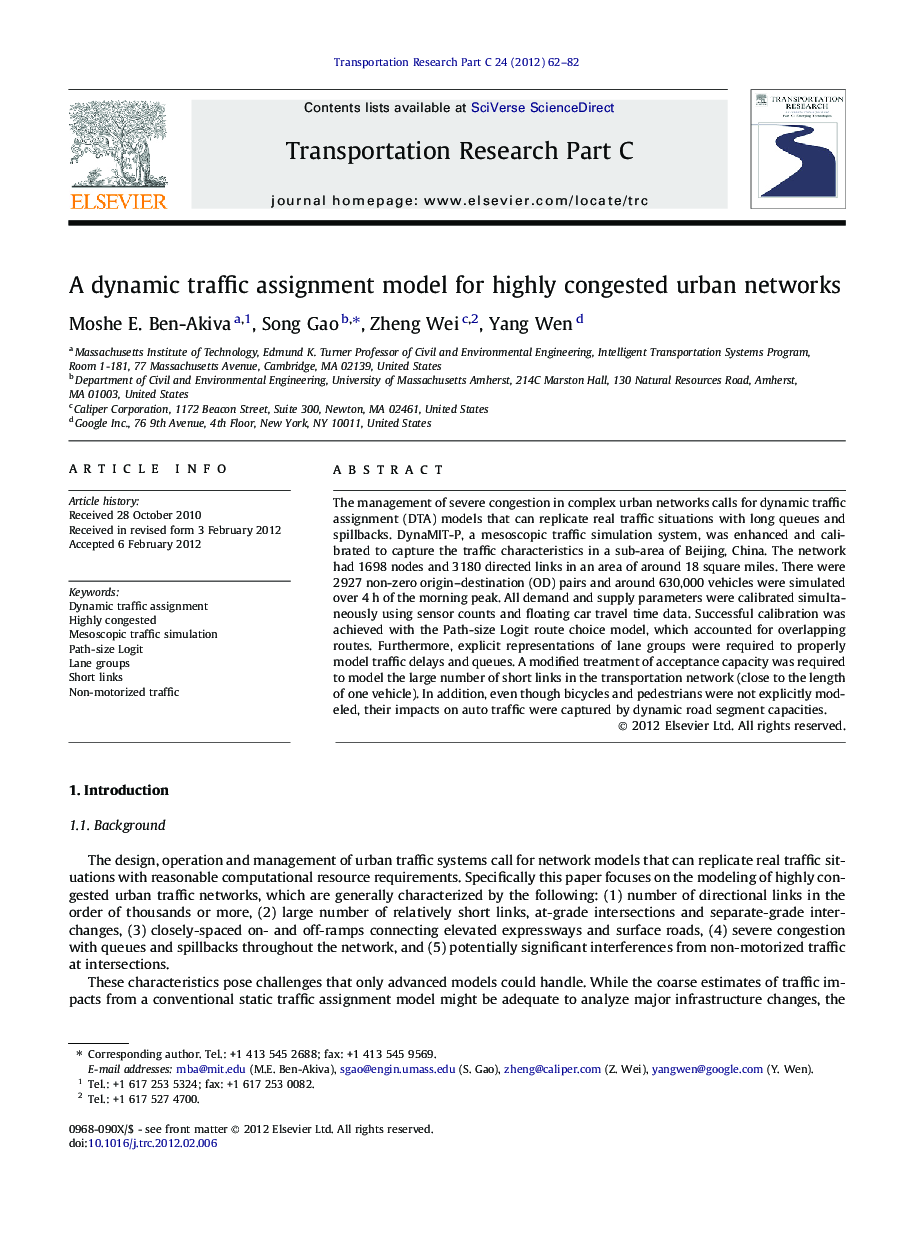| Article ID | Journal | Published Year | Pages | File Type |
|---|---|---|---|---|
| 525290 | Transportation Research Part C: Emerging Technologies | 2012 | 21 Pages |
The management of severe congestion in complex urban networks calls for dynamic traffic assignment (DTA) models that can replicate real traffic situations with long queues and spillbacks. DynaMIT-P, a mesoscopic traffic simulation system, was enhanced and calibrated to capture the traffic characteristics in a sub-area of Beijing, China. The network had 1698 nodes and 3180 directed links in an area of around 18 square miles. There were 2927 non-zero origin–destination (OD) pairs and around 630,000 vehicles were simulated over 4 h of the morning peak. All demand and supply parameters were calibrated simultaneously using sensor counts and floating car travel time data. Successful calibration was achieved with the Path-size Logit route choice model, which accounted for overlapping routes. Furthermore, explicit representations of lane groups were required to properly model traffic delays and queues. A modified treatment of acceptance capacity was required to model the large number of short links in the transportation network (close to the length of one vehicle). In addition, even though bicycles and pedestrians were not explicitly modeled, their impacts on auto traffic were captured by dynamic road segment capacities.
► A mesoscopic simulation-based traffic assignment model calibrated for a megacity. ► A route choice model accounting for overlapping routes is critical. ► Explicit representations of lane groups needed to model queues and spillbacks. ► The ability to handle a large number of short links is important. ► Impacts of non-motorized traffic modeled by dynamic road segment capacities.
